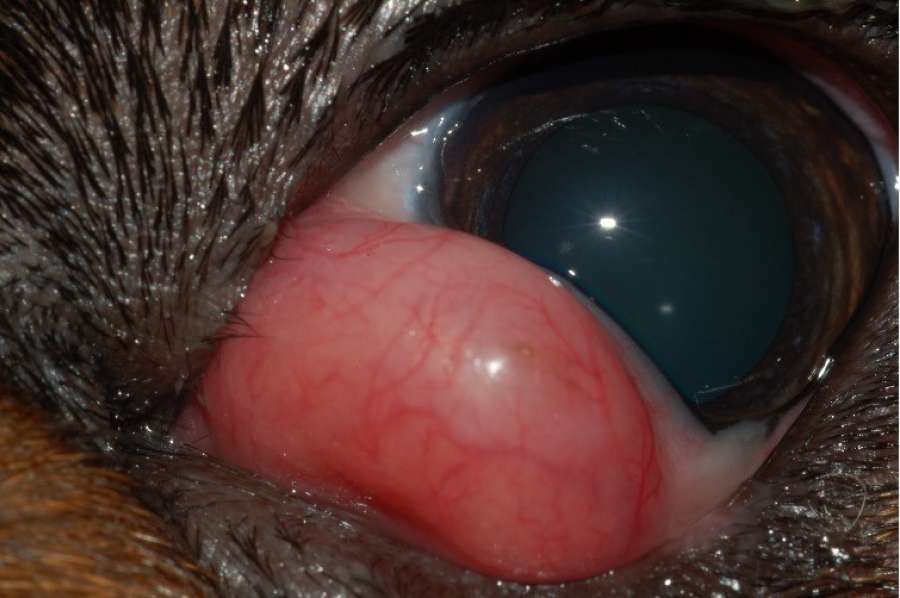Cherry Eye
Third eyelid gland prolapse (cherry eye) in dogs
Dogs, unlike us, have three eyelids. Along with their upper and lower lid, they have a third eyelid called the ‘nictitating membrane’. When your dog blinks, this eyelid sweeps across the front of the eye. The third eyelid usually sits neatly tucked away under your dog’s lower eyelid.
The third eyelid acts as a barrier to protect the cornea (front of the eye) and produces just under half of your dog’s tears. The tear-producing part of the third eyelid is the ‘nictitans gland’. A small ligament within the third eyelid secures this gland to your dog’s eye socket.
If this small ligament breaks, the nictitans gland slides out of position and prolapses (bulges) from the third eyelid. The appearance of the prolapsing gland looks like a bright, pink cherry hence the term ‘cherry eye’.
Cherry eye usually occurs in both eyes but not always at the same time. Often, it develops in the second eye weeks or months after the first.

Breeds
Any breed can develop cherry eye but it commonly affects:
- British and French bulldogs
- Cocker spaniels
- Cane Corsos
- Great Danes
- Shar Peis
- Bull mastiffs
- Beagles
- Lhaso Apsos
(Cats can also have cherry eye although it’s much less common.)
Most dogs are between 6-12 months old when they develop cherry eye.
Signs of a cherry eye
The most obvious sign of cherry eye is a bright pink bulge of tissue (lump) on the inner corner of your dog’s eye. This is the prolapsed nictitans gland.
A prolapsed nictitans gland produces fewer tears causing your dog’s eye to feel dry and painful. Your dog might blink more and the eye might appear sticky. If your dog’s eye is very dry, a corneal ulcer (open sore on the front surface of the eye) might develop.
What treatment is available?
Your dog will need surgery to repair the cherry eye and prevent it from recurring. At Focus Referrals, we use the ‘pocket technique’ to replace the nictitans gland into the third eyelid and anchor it into position.
By surgically correcting cherry eye, rather than removing it, your dog will have a lower chance of developing complications such as long term dry eye.
Surgery
Your dog will spend the day with us as an inpatient. We fully examine your dog before surgery to make sure they’re well enough for the operation.
Your dog will be fully asleep under general anaesthetic throughout the operation. Our experienced nurses carefully monitor your dog during surgery and while they recover.
What happens after surgery?
Your dog will need to wear a buster collar for around 10 days to prevent them from scratching their eyes.
We’ll dispense eye creams and tablets to keep your pet comfortable and prevent eye infections developing.
We’ll check your dog 7-10 days following their surgery but you can contact us anytime with questions.
If you’d like to find out how Focus can help treat your dog’s cherry eye, please ask your vet to get in touch with us.

